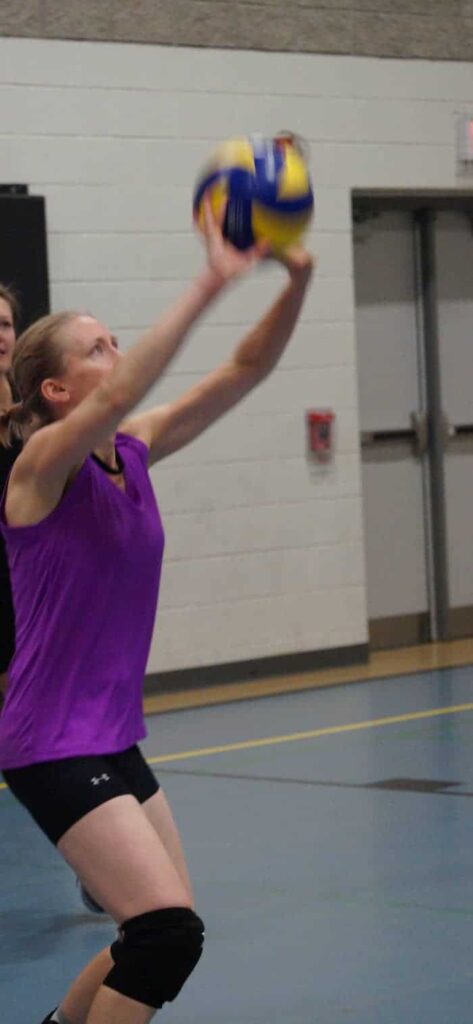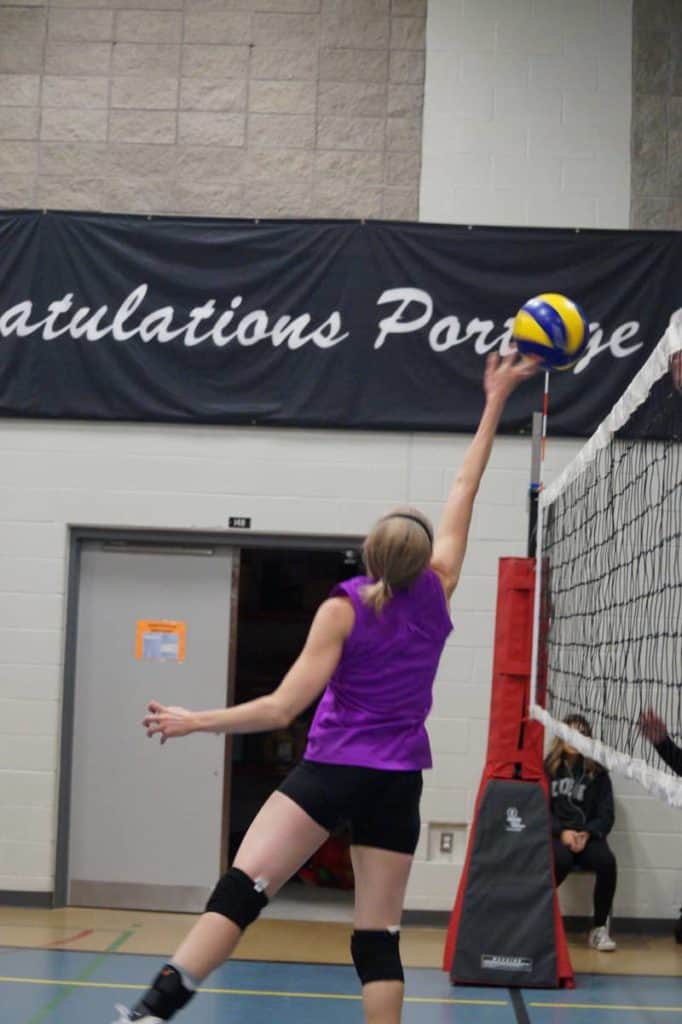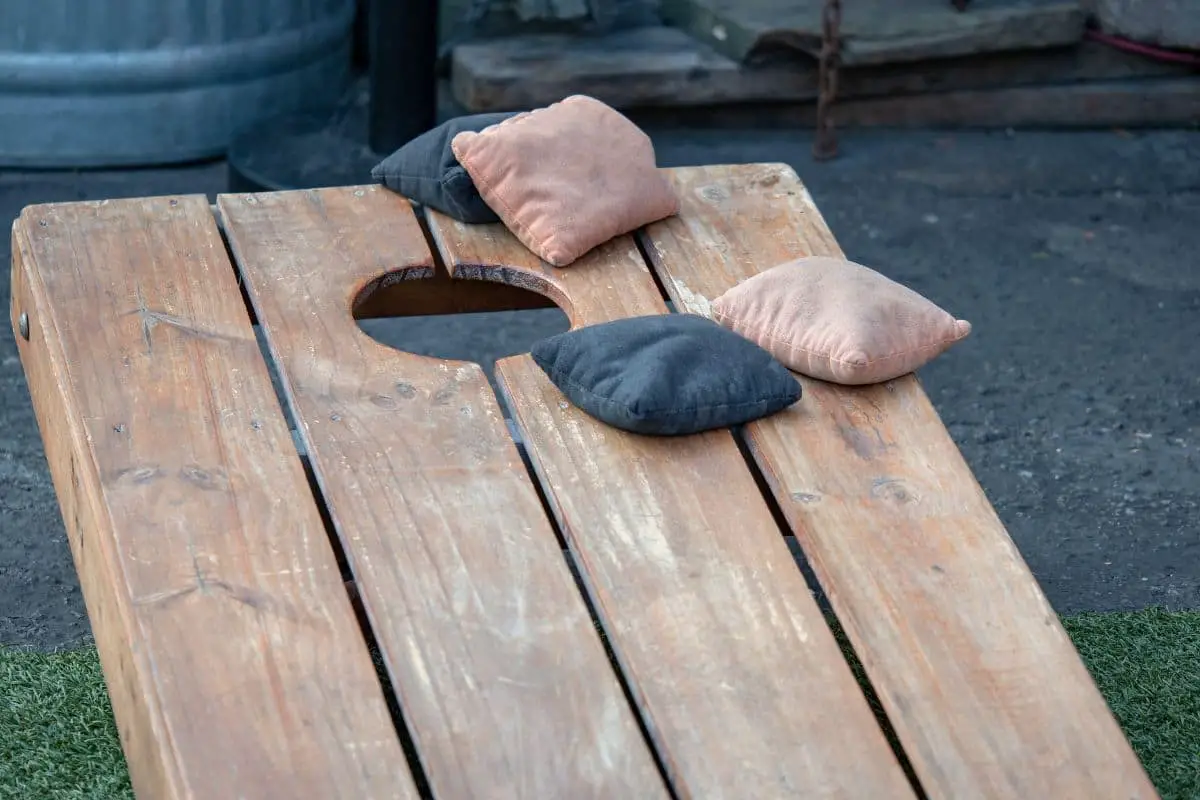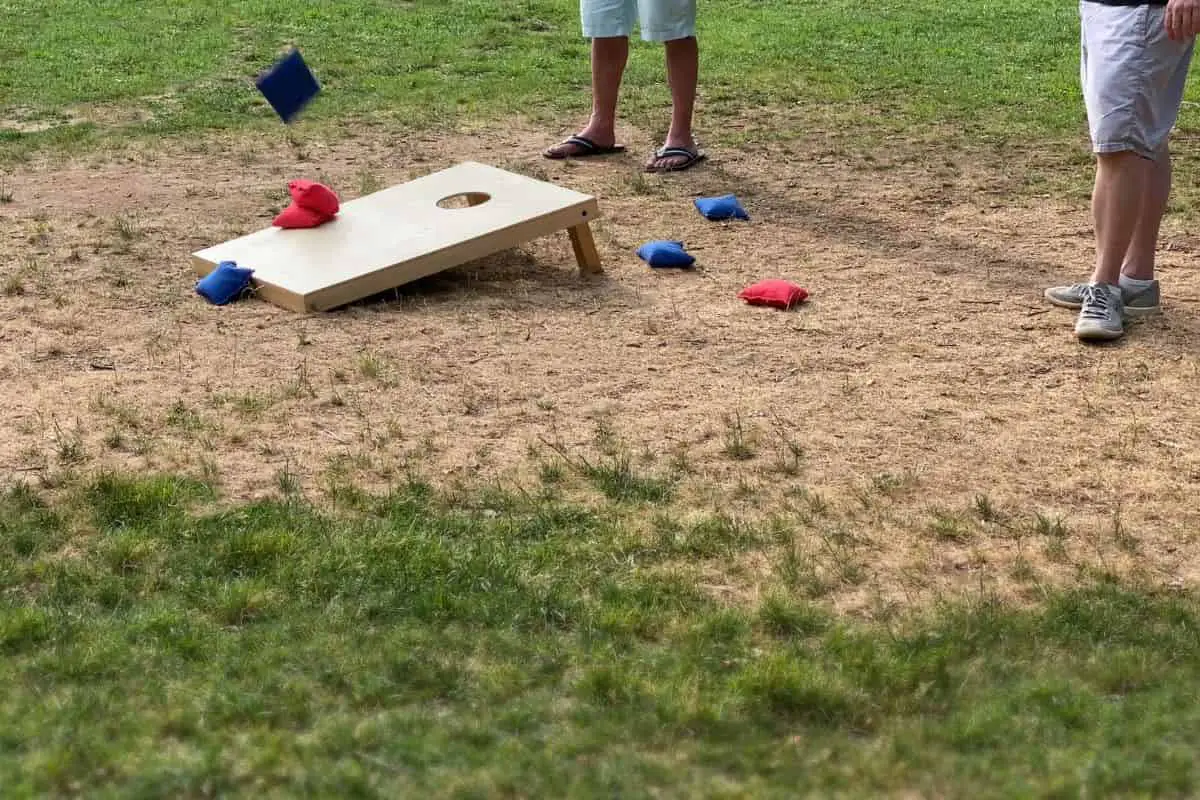Many people think that you have to be an amazing hitter to be a good volleyball player. While being able to spike the ball is a great skill to have, it’s not the only way that you can score a point in volleyball. With spiking, the primary objective is power – you want to hit that ball as hard as possible. However, there are other ways to get that ball over the net, and put your team in a scoring position.
When you’re just starting to play volleyball, it’s easy to feel intimidated and to just want to get the ball over the net as quickly as possible. However, when the ball is on your side of the court and you’re setting up an offensive play, your team can actually touch the ball 3 times before sending it back over the net. And you want to maximize those 3 touches as much as possible, to give your team a great scoring opportunity.
If you’re the player that’s hitting the ball for the third touch, you’ll want to send the ball over the net strategically to try to score the point. Most players assume the hard-driven, powerful spike is the best scoring option. While this is often true, it’s not always the case. There are times when you’ll want (or need) to have other options. Big blockers, a bad set, or bad timing on the part of the hitter can all impact the opportunity to be in good position to spike the ball.
Spiking a volleyball is a great skill to have. But when you’re just learning to play volleyball, it can be intimidating to have the ball set to you for an attack. If it’s a good set, and you’re comfortable trying to hit the ball, go for it! But if you’re not comfortable trying to spike the ball, here are some other options for you.
1. Tip
Ah, the good old-fashioned tip. A tip is often the saving grace for the hitter when they just can’t manage a hit. Whether it’s a set that’s too close to the net, or the hitter has mistimed their approach, a tip is a great way to get the ball over the net.
How to Tip:
Think of a tip as a spike without the arm swing follow through. When a player spikes the ball, they start with their arms in front, and then bring their arm back to hit the ball hard, and then they continue with the arm swing even after they have contacted the ball.

For a tip, the player approaches the ball with their arm already up to meet the ball in the air. They can use their fingertips to contact the ball, the top part of their knuckles (called a knuckleball – I know, who would’ve thought!), or they can poke at it with the very tip of their index, middle, and ring finger (called a poke). The poke is actually quite challenging to do. The most popular way to tip is to use your fingertips, but being able to do a knuckle ball is also a great skill to learn.
But don’t think that a tip is just a way to save a spike. A well-planned tip can also be a great play on its own, because the player generally has way more aim when they tip, and they can more strategically aim their shot into the defensive holes they’ve identified on the other team’s defensive setup.
A common time to tip is when there’s a huge, intimidating block that’s super tough to hit around. A good tip will sail just over the top of the block and force one of the defensive players to dig the ball. This way, the opposing team will have a harder time setting up their bump-set-spike play.
A tip is also a great changeup play for a hitter who usually spikes all the time. The other team is used to the player spiking a hard-driven ball, so they will adjust their defense to be ready for a hard spike. But when that player all of a sudden tips the ball instead, the other team is thrown off. So, throw in a well-timed tip every now and then!
2. Roll shot over the block
A roll shot is a great option for a player when they are facing a tough block, they’ve mistimed their hitting approach, or they’ve identified areas of the other team’s defense that aren’t being covered well.
The intent of a regular spike is for the hitter to jump up as high as they can, and then hit the ball at a downward trajectory. For a roll shot, the player may or may not jump. Either way, they aren’t hitting the ball downwards. They’re adding more of an arc to the ball, so that it goes over the block, but then drops down with spin.
How to do a roll shot:
It’s called a roll shot because the player rolls their hand along the ball to give it some spin. This makes the ball drop suddenly after it goes over the net, so it’s harder for the defensive players to pick up.
To add the roll, the player contacts the underneath of the ball and rolls their hand up and over it as they make hitting contact. This rolling contact happens quickly, giving the ball spin. It takes a bit of practice, but it’s a very effective offensive play. Just make sure that you hit the ball hard enough so that it actually goes over the net… I’ve seen some roll shot attempts that drop on the hitter’s own side of the court! Ooh, so embarrassing!
When doing a roll shot, it’s a good idea to try to take a quick look at the other side of the court to identify where the defensive holes are. A roll shot is not as effective if you hit it right at one of the opposing team’s players!
3. Down ball/standing spike
While technically still a spike, a down ball (or standing spike) is a bit of a slower play because there’s no jumping approach. A down ball often happens because the hitter mistimed their hitting approach, or because a player is in the back court and didn’t have time to do their jumping approach.
(Remember, a player can still hit from the back court, they just have to stay below the height of the net when they contact the ball.)
How to hit a down ball
A down ball is almost like an overhand serve in technique – minus the advantage of holding the ball when you start your approach. Even though the hitter isn’t jumping, they will still want to be taking a step forward (with the leg opposite to the hitting arm) when they contact the ball. This gives the hitter much more strength, and puts less impact on your back.
There is no rolling technique with a down ball, just a good, hard-driven hit of the ball, with a full arm swing follow through.
As with a roll shot, when a player is swinging at a down ball, they will often have enough time that they can take a quick scan of the defensive setup on the other side of the net. Actually, this is especially important to do with a down ball, because there’s no arc, so it’s easier to hit right into the block. So, even if you don’t have enough time to scan the whole court, at least take a look to see where the block is.
4. Volley over

It’s definitely not as glamorous as a spike, but a good, strong volley over the net can be a really effective offensive play. The player has much more control over the ball, they can easily avoid the block, and they can aim it to where the defensive holes are.
But this isn’t a friendly lob over the net, so that the other team can say, “Thank you”, and then setup their own offensive play. You will want to include a certain amount of strategy and aggression into your volley.
How to volley over the net as an offensive play
Remember, you’re not just volleying over the net – you’re still trying to score a point. The best way to do that is to aim your volley strategically. Look for the holes in the defense and send your volley directly to those holes.
When volleying over the net, you will definitely want to avoid the block, so keep an eye to where you’re aiming the ball. Square up your shoulders to the target, and take a step as you make contact. This gives your volley more strength to go deeper into the court. Keep it as low as possible, while staying clear of the block.
But don’t jump – not only will this look kind of funny, there’s a good chance you’ll get called on a ball handling violation. Give your volley a good solid foundation by keeping your bottom half steady.
To be most effective when volleying over the net, aim for the deeper corners. Most defensive players creep up a little bit to cover the blockers, so when a player is volleying over the net, the deepest parts of the court are often more vulnerable.
5. Bump over into a defensive hole
Even less glamorous than the volley over the net, is the bump over the net. This is often the last-ditch effort at just getting the ball over the net, so that your team can scramble themselves back into position. But, as with the volley over, don’t just lob it over the net to make it easy for your opponent! Add some strategy, and you may still have a scoring chance.
How to bump over as an offensive play
The technique for bumping over the net is not much different than a regular bump. But the strategy definitely is different.
First things first, make sure you’re aiming into your opponent’s side of the court. This may sound silly, but when a player is bumping over, it’s often because the play got a little out of control (like after a digging play), and the player might be turned around a bit. Try to keep your spatial awareness, and aim into the court.
Similar to a volley, make sure you’re bumping it high enough over the block, but low enough so that it’s still aggressive. Don’t just lob it over. This is known as a free ball – meaning, it’s a nice and easy free opportunity for the other team to setup an offensive play.
A free ball is great when you get one from the other team, but if you’ve just handed your opponents a free ball, get ready for a bump-set-spike… aimed right back at ya!
When a player is bumping the ball over for the third hit, you’ll often see them bump at the ball with more of a sideways motion, instead of bumping with their shoulders facing square to their target. A sideways bump, though not ideal in technique, usually results in less arc and more speed. Just remember to aim it at an open spot in your opponent’s defensive setup.
6. Setter dump/tip
Often, new players are so focussed on the bump-set-spike sequence, they may forget that the player setting the ball may be in a great position to deliver an offensive attack on the second hit. This is called a setter dump, or a setter tip. When delivered at the right time, this is a great scoring opportunity, because the other team will be taken off-guard.

The other team is expecting the hit to be coming from one of the hitters, so they’re likely focussed on where they should setup their block. A hit or tip from the setter may not be on their radar.
The setter dump/tip is most effective when the setter is in the front court, because then they can jump over the height of the net. A setter that is in the backcourt could still volley the ball over on the second hit, but they have to contact the ball below the height of the net.
How to do a setter dump/tip
The most important factor of a setter dump is timing. And the best timing is actually a bit contradictory. When the pass is tight to the net, and it’s harder for the setter to get a good set, the other team will actually expect the setter to tip the ball over the net. However, the other team is less likely to expect the setter to tip when the pass was actually not that bad.
There are actually quite a few techniques for a setter dump. A setter can turn quickly and hit the ball (though they won’t get a full hitting approach), they can tip, or they can get more aggressive and swipe at the ball.
The setter should also try to keep an eye on the block. Because they’re likely already so close to the net, they may end up tipping or hitting right into the block. Having a good sense of where the block is setup is a critical factor in deciding to do a setter dump. Click here for how to ace your game with these volleyball serving tips
As you can see, there are more ways to get the ball over the net strategically than just spiking it as hard as possible. Having a good offensive attack is not just about power – it’s about knowing your opponent’s weaknesses, and knowing which one of your attacking options to use. I’ve seen all of the above score points, and even though they weren’t as glamourous as a killer spike (especially that bump attack!), they were still worth the point it earned. And the high 5s from teammates!





Leave a Reply
You must be logged in to post a comment.